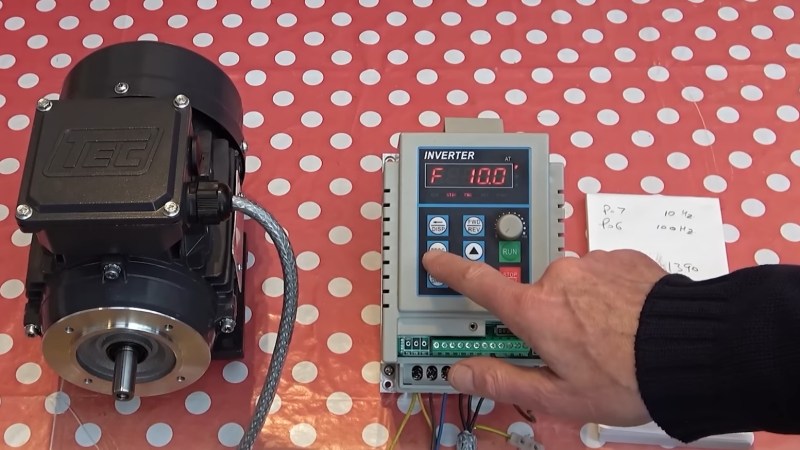Fusion and AI: How private sector tech is powering progress at ITER
In April 2025, at the ITER Private Sector Fusion Workshop in Cadarache, something remarkable unfolded. In a room filled with scientists, engineers and software visionaries, the line between big science and commercial innovation began to blur.
Three organisations – Microsoft Research, Arena and Brigantium Engineering – shared how artificial intelligence, already transforming everything from language models to logistics, is now stepping into a new role: helping humanity to unlock the power of nuclear fusion.
Each presenter addressed a different part of the puzzle, but the message was the same: AI isn’t just a buzzword anymore. It’s becoming a real tool – practical, powerful and indispensable – for big science and engineering projects, including fusion.
“If we think of the agricultural revolution and the industrial revolution, the AI revolution is next – and it’s coming at a pace which is unprecedented,” said Kenji Takeda, director of research incubations at Microsoft Research.
Microsoft’s collaboration with ITER is already in motion. Just a month before the workshop, the two teams signed a Memorandum of Understandingto explore how AI can accelerate research and development. This follows ITER’s initial use of Microsoft technology to empower their teams.
A chatbot in Azure OpenAI service was developed to help staff navigate technical knowledge, on more than a million ITER documents, using natural conversation. GitHub Copilot assists with coding, while AI helps to resolve IT support tickets – those everyday but essential tasks that keep the lights on.
But Microsoft’s vision goes deeper. Fusion demands materials that can survive extreme conditions – heat, radiation, pressure – and that’s where AI shows a different kind of potential. MatterGen, a Microsoft Research generative AI model for materials, designs entirely new materials based on specific properties.
“It’s like ChatGPT,” said Takeda, “but instead of ‘Write me a poem’, we ask it to design a material that can survive as the first wall of a fusion reactor.”
The next step? MatterSim – a simulation tool that predicts how these imagined materials will behave in the real world. By combining generation and simulation, Microsoft hopes to uncover materials that don’t yet exist in any catalogue.
While Microsoft tackles the atomic scale, Arena is focused on a different challenge: speeding up hardware development. As general manager Michael Frei put it: “Software innovation happens in seconds. In hardware, that loop can take months – or years.”
Arena’s answer is Atlas, a multimodal AI platform that acts as an extra set of hands – and eyes – for engineers. It can read data sheets, interpret lab results, analyse circuit diagrams and even interact with lab equipment through software interfaces. “Instead of adjusting an oscilloscope manually,” said Frei, “you can just say, ‘Verify the I2Cprotocol’, and Atlas gets it done.”
It doesn’t stop there. Atlas can write and adapt firmware on the fly, responding to real-time conditions. That means tighter feedback loops, faster prototyping and fewer late nights in the lab. Arena aims to make building hardware feel a little more like writing software – fluid, fast and assisted by smart tools.
Fusion, of course, isn’t just about atoms and code – it’s also about construction. Gigantic, one-of-a-kind machines don’t build themselves. That’s where Brigantium Engineering comes in.
Founder Lynton Sutton explained how his team uses “4D planning” – a marriage of 3D CAD models and detailed construction schedules – to visualise how everything comes together over time. “Gantt charts are hard to interpret. 3D models are static. Our job is to bring those together,” he said.
The result is a time-lapse-style animation that shows the construction process step by step. It’s proven invaluable for safety reviews and stakeholder meetings. Rather than poring over spreadsheets, teams can simply watch the plan come to life.
And there’s more. Brigantium is bringing these models into virtual reality using Unreal Engine – the same one behind many video games. One recent model recreated ITER’s tokamak pit using drone footage and photogrammetry. The experience is fully interactive and can even run in a web browser.
“We’ve really improved the quality of the visualisation,” said Sutton. “It’s a lot smoother; the textures look a lot better. Eventually, we’ll have this running through a web browser, so anybody on the team can just click on a web link to navigate this 4D model.”
Looking forward, Sutton believes AI could help automate the painstaking work of syncing schedules with 3D models. One day, these simulations could reach all the way down to individual bolts and fasteners – not just with impressive visuals, but with critical tools for preventing delays.
Despite the different approaches, one theme ran through all three presentations: AI isn’t just a tool for office productivity. It’s becoming a partner in creativity, problem-solving and even scientific discovery.
Takeda mentioned that Microsoft is experimenting with “world models” inspired by how video games simulate physics. These models learn about the physical world by watching pixels in the form of videos of real phenomena such as plasma behaviour. “Our thesis is that if you showed this AI videos of plasma, it might learn the physics of plasmas,” he said.
It sounds futuristic, but the logic holds. The more AI can learn from the world, the more it can help us understand it – and perhaps even master it. At its heart, the message from the workshop was simple: AI isn’t here to replace the scientist, the engineer or the planner; it’s here to help, and to make their work faster, more flexible and maybe a little more fun.
As Takeda put it: “Those are just a few examples of how AI is starting to be used at ITER. And it’s just the start of that journey.”
If these early steps are any indication, that journey won’t just be faster – it might also be more inspired.
#fusion #how #private #sector #techFusion and AI: How private sector tech is powering progress at ITER
In April 2025, at the ITER Private Sector Fusion Workshop in Cadarache, something remarkable unfolded. In a room filled with scientists, engineers and software visionaries, the line between big science and commercial innovation began to blur.
Three organisations – Microsoft Research, Arena and Brigantium Engineering – shared how artificial intelligence, already transforming everything from language models to logistics, is now stepping into a new role: helping humanity to unlock the power of nuclear fusion.
Each presenter addressed a different part of the puzzle, but the message was the same: AI isn’t just a buzzword anymore. It’s becoming a real tool – practical, powerful and indispensable – for big science and engineering projects, including fusion.
“If we think of the agricultural revolution and the industrial revolution, the AI revolution is next – and it’s coming at a pace which is unprecedented,” said Kenji Takeda, director of research incubations at Microsoft Research.
Microsoft’s collaboration with ITER is already in motion. Just a month before the workshop, the two teams signed a Memorandum of Understandingto explore how AI can accelerate research and development. This follows ITER’s initial use of Microsoft technology to empower their teams.
A chatbot in Azure OpenAI service was developed to help staff navigate technical knowledge, on more than a million ITER documents, using natural conversation. GitHub Copilot assists with coding, while AI helps to resolve IT support tickets – those everyday but essential tasks that keep the lights on.
But Microsoft’s vision goes deeper. Fusion demands materials that can survive extreme conditions – heat, radiation, pressure – and that’s where AI shows a different kind of potential. MatterGen, a Microsoft Research generative AI model for materials, designs entirely new materials based on specific properties.
“It’s like ChatGPT,” said Takeda, “but instead of ‘Write me a poem’, we ask it to design a material that can survive as the first wall of a fusion reactor.”
The next step? MatterSim – a simulation tool that predicts how these imagined materials will behave in the real world. By combining generation and simulation, Microsoft hopes to uncover materials that don’t yet exist in any catalogue.
While Microsoft tackles the atomic scale, Arena is focused on a different challenge: speeding up hardware development. As general manager Michael Frei put it: “Software innovation happens in seconds. In hardware, that loop can take months – or years.”
Arena’s answer is Atlas, a multimodal AI platform that acts as an extra set of hands – and eyes – for engineers. It can read data sheets, interpret lab results, analyse circuit diagrams and even interact with lab equipment through software interfaces. “Instead of adjusting an oscilloscope manually,” said Frei, “you can just say, ‘Verify the I2Cprotocol’, and Atlas gets it done.”
It doesn’t stop there. Atlas can write and adapt firmware on the fly, responding to real-time conditions. That means tighter feedback loops, faster prototyping and fewer late nights in the lab. Arena aims to make building hardware feel a little more like writing software – fluid, fast and assisted by smart tools.
Fusion, of course, isn’t just about atoms and code – it’s also about construction. Gigantic, one-of-a-kind machines don’t build themselves. That’s where Brigantium Engineering comes in.
Founder Lynton Sutton explained how his team uses “4D planning” – a marriage of 3D CAD models and detailed construction schedules – to visualise how everything comes together over time. “Gantt charts are hard to interpret. 3D models are static. Our job is to bring those together,” he said.
The result is a time-lapse-style animation that shows the construction process step by step. It’s proven invaluable for safety reviews and stakeholder meetings. Rather than poring over spreadsheets, teams can simply watch the plan come to life.
And there’s more. Brigantium is bringing these models into virtual reality using Unreal Engine – the same one behind many video games. One recent model recreated ITER’s tokamak pit using drone footage and photogrammetry. The experience is fully interactive and can even run in a web browser.
“We’ve really improved the quality of the visualisation,” said Sutton. “It’s a lot smoother; the textures look a lot better. Eventually, we’ll have this running through a web browser, so anybody on the team can just click on a web link to navigate this 4D model.”
Looking forward, Sutton believes AI could help automate the painstaking work of syncing schedules with 3D models. One day, these simulations could reach all the way down to individual bolts and fasteners – not just with impressive visuals, but with critical tools for preventing delays.
Despite the different approaches, one theme ran through all three presentations: AI isn’t just a tool for office productivity. It’s becoming a partner in creativity, problem-solving and even scientific discovery.
Takeda mentioned that Microsoft is experimenting with “world models” inspired by how video games simulate physics. These models learn about the physical world by watching pixels in the form of videos of real phenomena such as plasma behaviour. “Our thesis is that if you showed this AI videos of plasma, it might learn the physics of plasmas,” he said.
It sounds futuristic, but the logic holds. The more AI can learn from the world, the more it can help us understand it – and perhaps even master it. At its heart, the message from the workshop was simple: AI isn’t here to replace the scientist, the engineer or the planner; it’s here to help, and to make their work faster, more flexible and maybe a little more fun.
As Takeda put it: “Those are just a few examples of how AI is starting to be used at ITER. And it’s just the start of that journey.”
If these early steps are any indication, that journey won’t just be faster – it might also be more inspired.
#fusion #how #private #sector #tech












